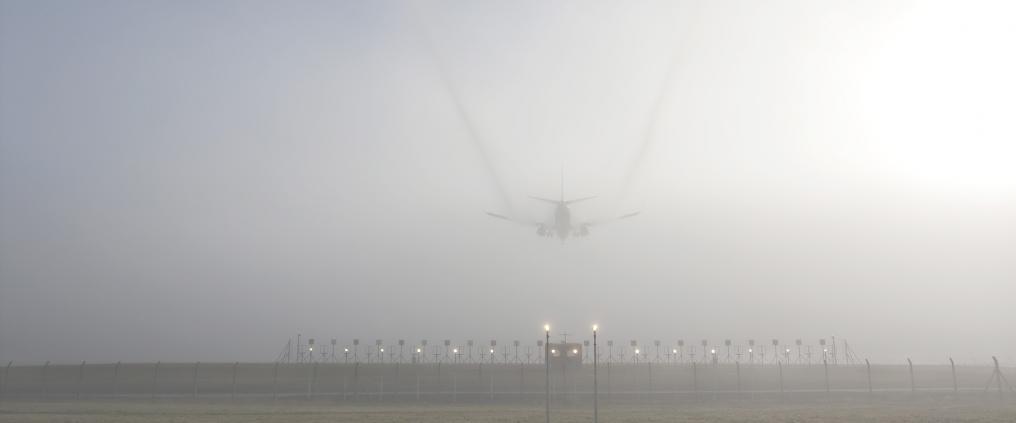The Instrument Landing System (ILS) allows aircraft to approach the runway even without any visual contact with it. At its best, the system is able to guide an aircraft all the way down to the runway.
'A functional ILS system is a critical prerequisite for regular commercial air traffic at airports this far north. These systems are used at all the airports we manage', says Hannu Hervos, Director of Air Navigation Services for Finavia.
'ILS systems can be used from as far as 25 miles from the runway, when approaching from the correct direction and at the correct altitude. Nearly every landing begins with ILS system guidance'.
System safety verified by flight measurements
ILS systems are composed of two subsystems – one operating laterally and the other one vertically. A localizer guides the aircraft laterally, while a glide scope leads it to land on the correct glide path.
ILS systems operate in conjunction with distance measuring systems. Many Finnish airports use a DME beacon (DME = Distance Measuring Equipment) to determine the distance between the aircraft and runway touchdown zone – the point where the aircraft wheels touch the runway – during the entire landing process.
'We verify the accuracy of all ILS systems and their signals twice a year by performing flight measurements. Reliable glide scope verification always requires flight measurements', Hervos points out.
Helsinki Airport has a category III system
The signals sent by ILS systems are standardised and classified into three categories. There are also differences between system equipment and devices.
ILS systems guide aircraft through the landing process to the runway touchdown, even in nearly zero-visibility conditions.
Helsinki Airport operates five ILS systems, one of which belongs to the top class, category III. This system assists aircraft landing on runway 04L, taking them through the landing process to the runway touchdown, even in nearly zero-visibility conditions.
ILS systems of category II or I are used on other Helsinki Airport runways.
Category I ILS systems are also in use at several other Finnish airports. They require the aircraft to visualise the runway so early in the landing process that a pull-up manoeuvre is possible without the wheels touching down, should it be necessary.
Future ILS systems based on satellite data
ILS system equipment is always tuned in accordance with the demands posed by the installation sites and surrounding terrain. The total price of one set of equipment may easily amount to a million euros.
Finavia has systematically renewed its stock of ILS equipment in recent years. The next investment is planned for Pori Airport next year.
'Current ILS systems are likely to be used for another 15 to 20 years. They will gradually be replaced by satellite-based ILS systems that don't need any antennae installed on the ground', Hervos explains.



